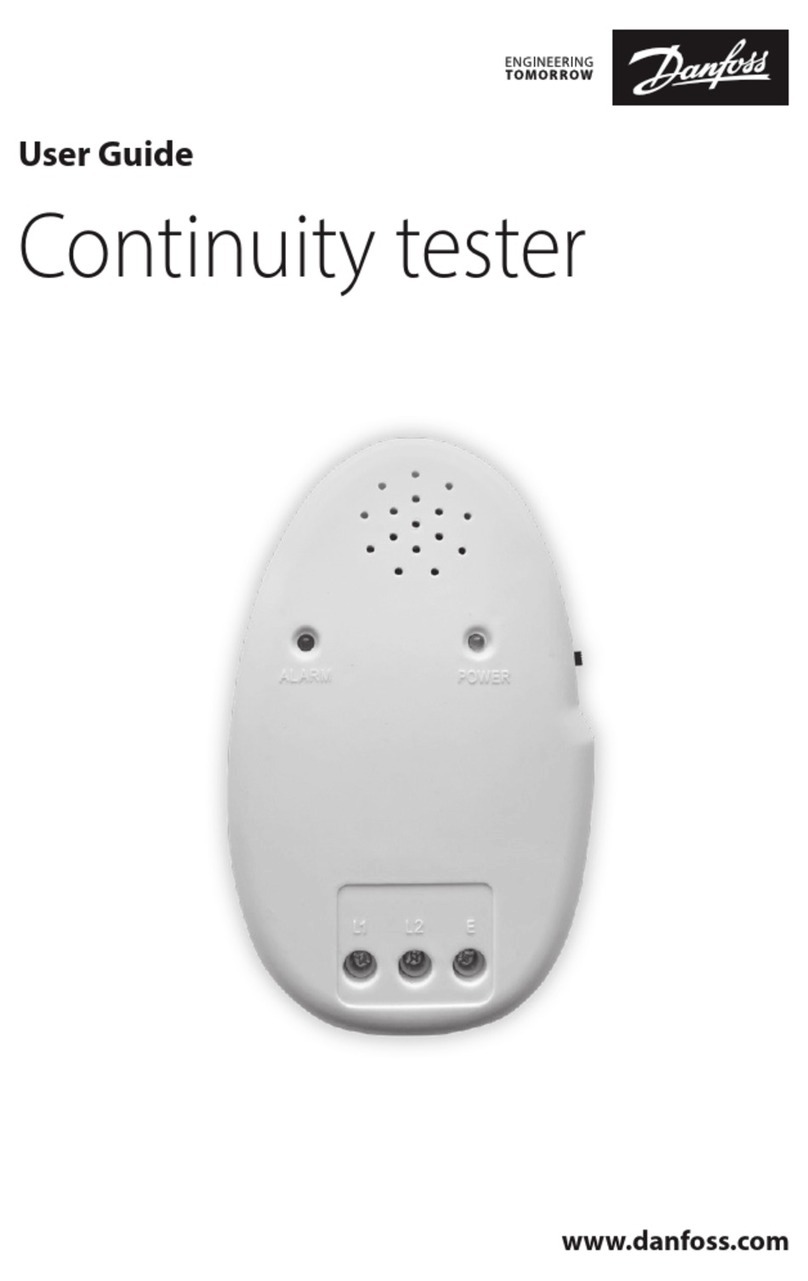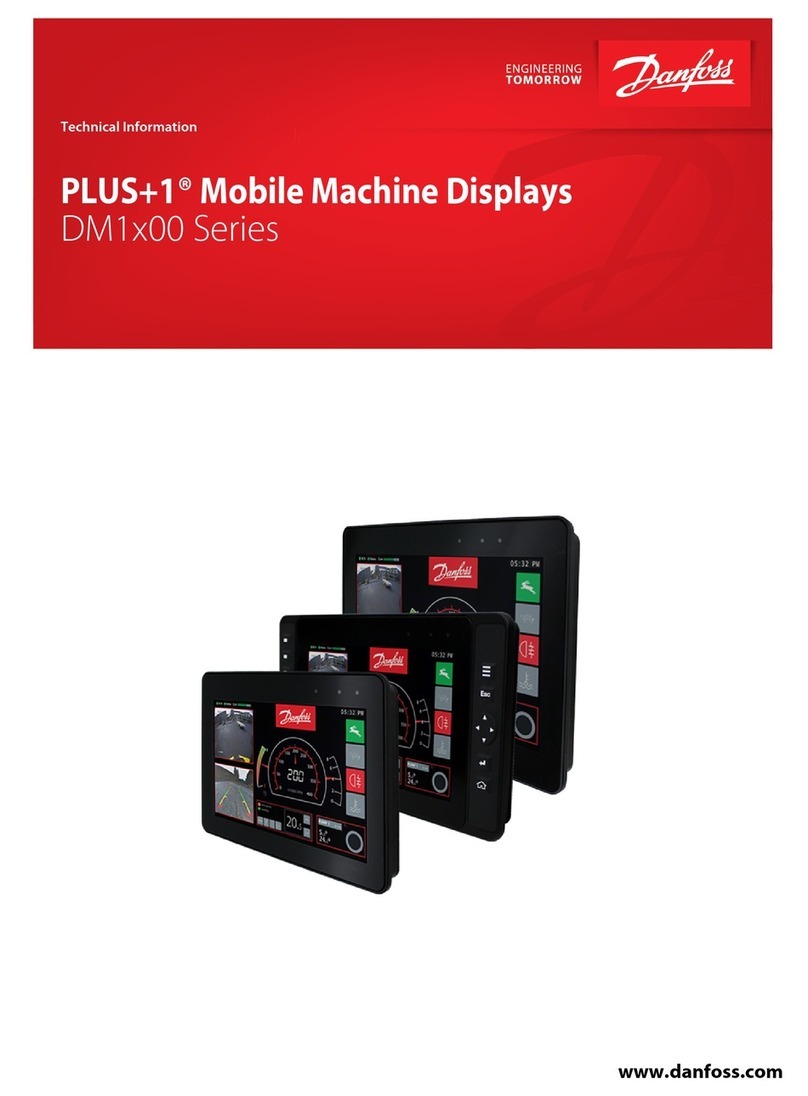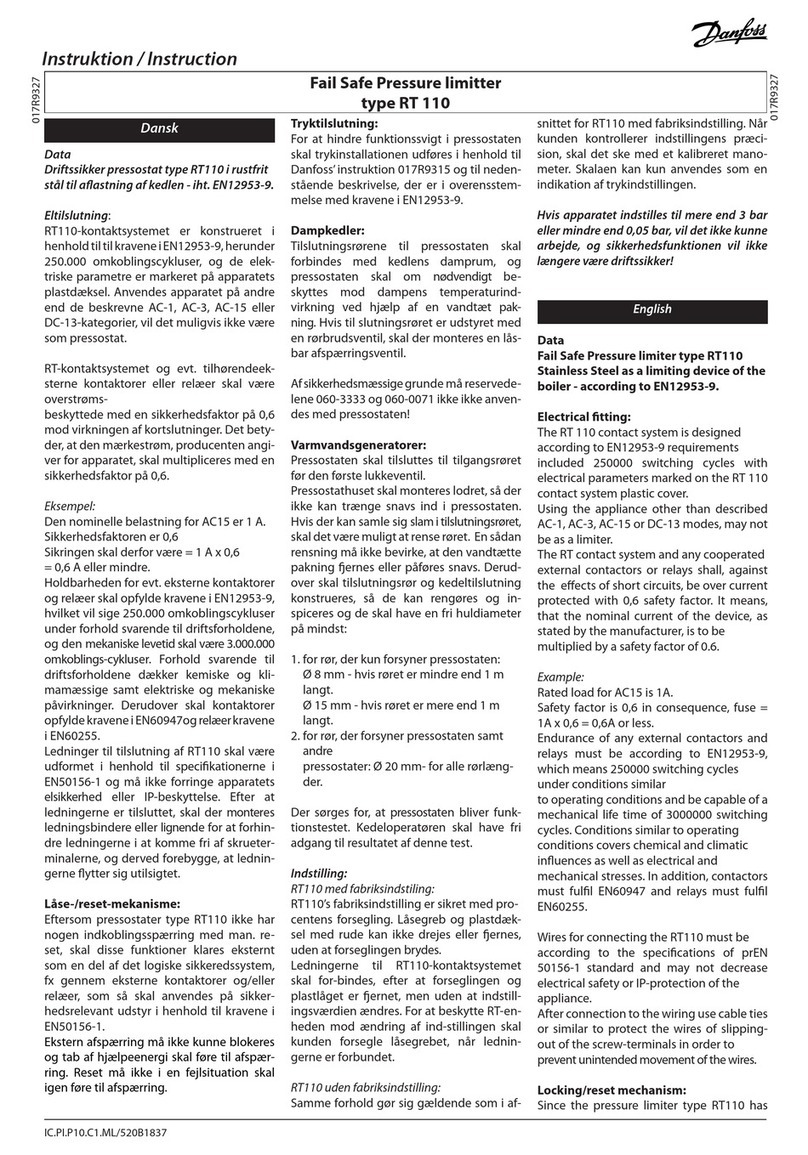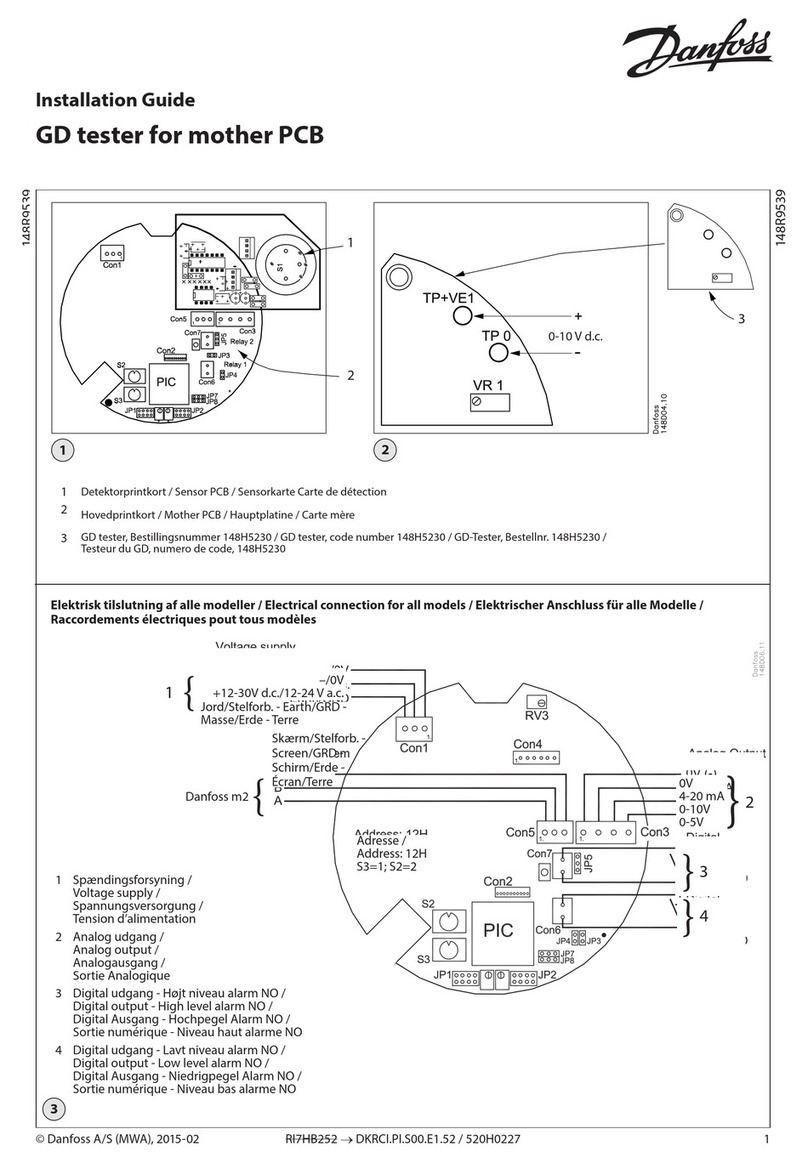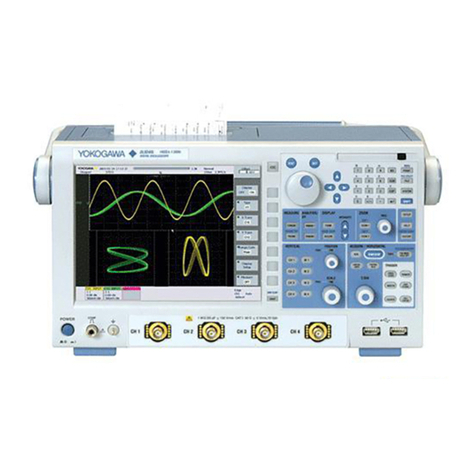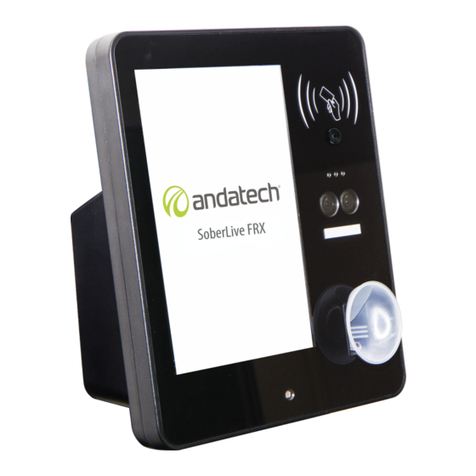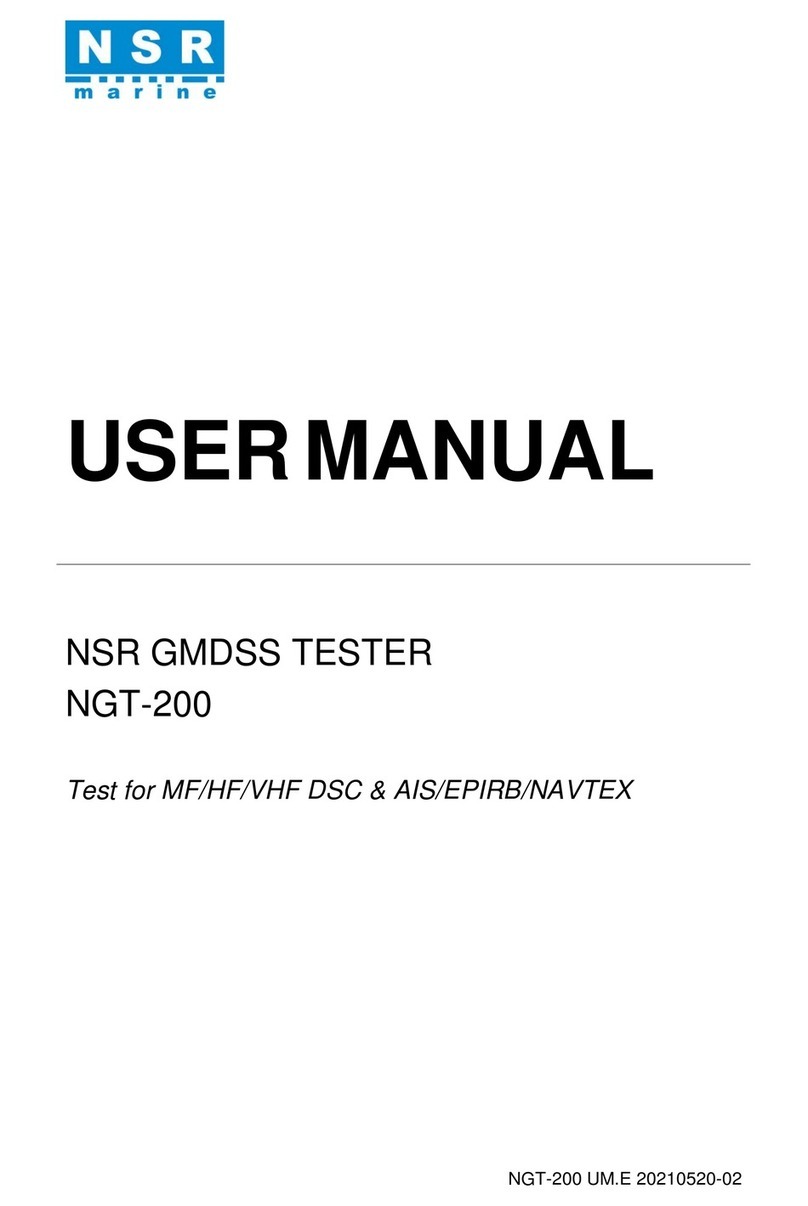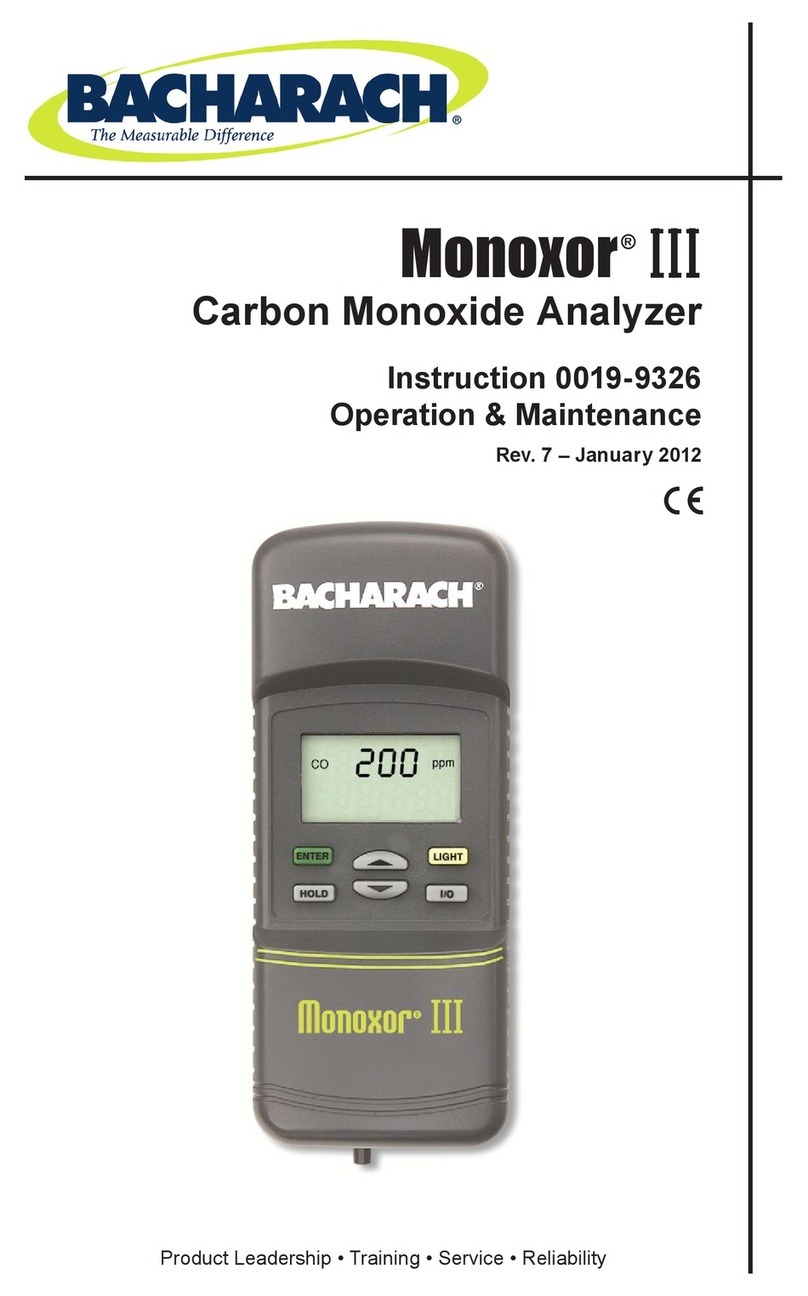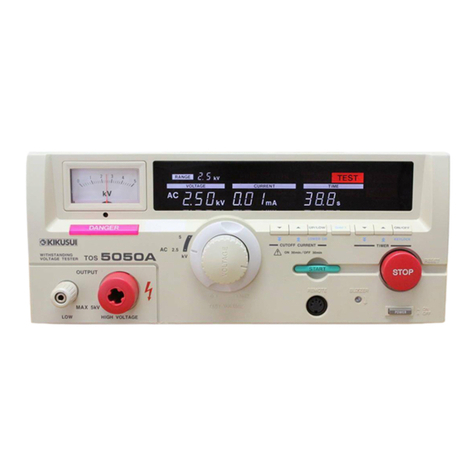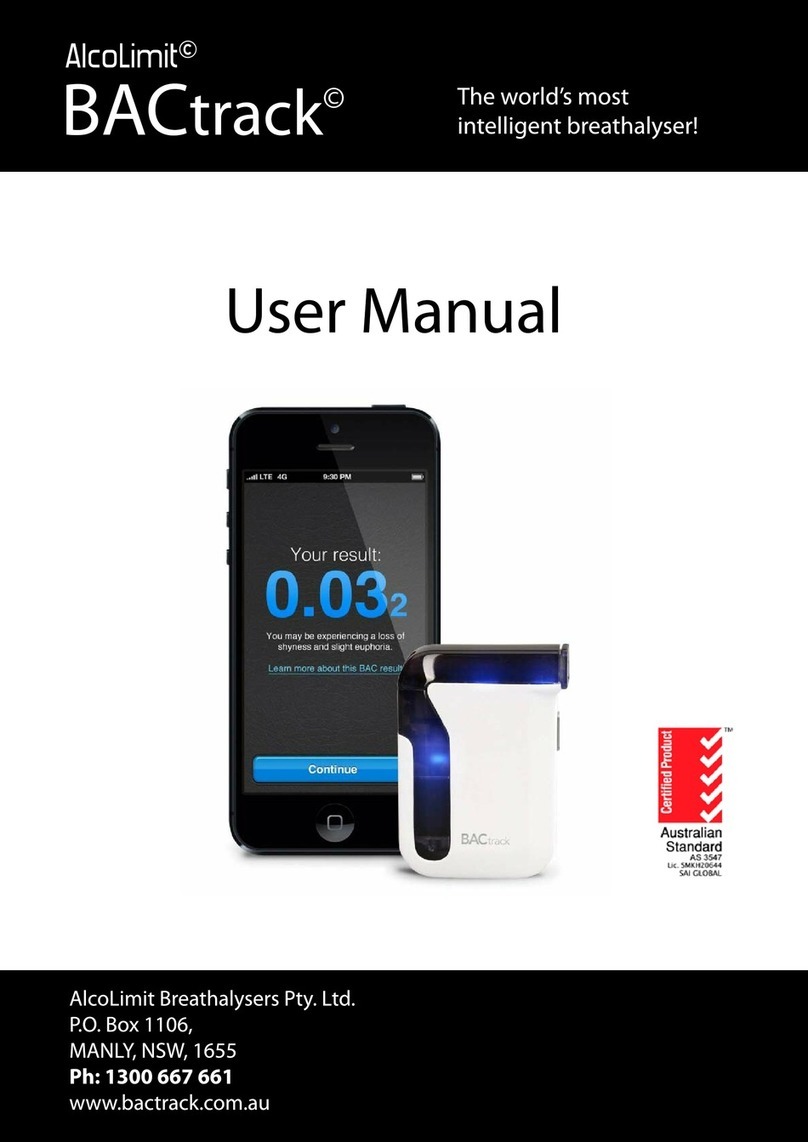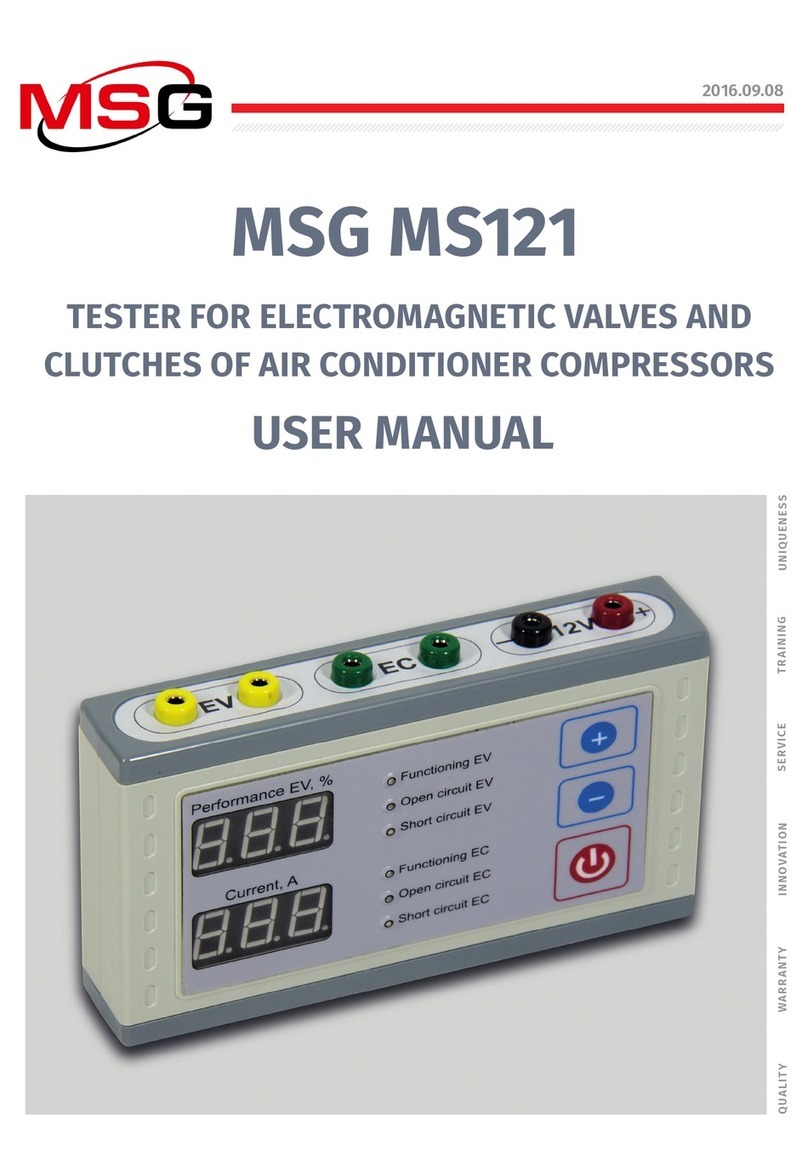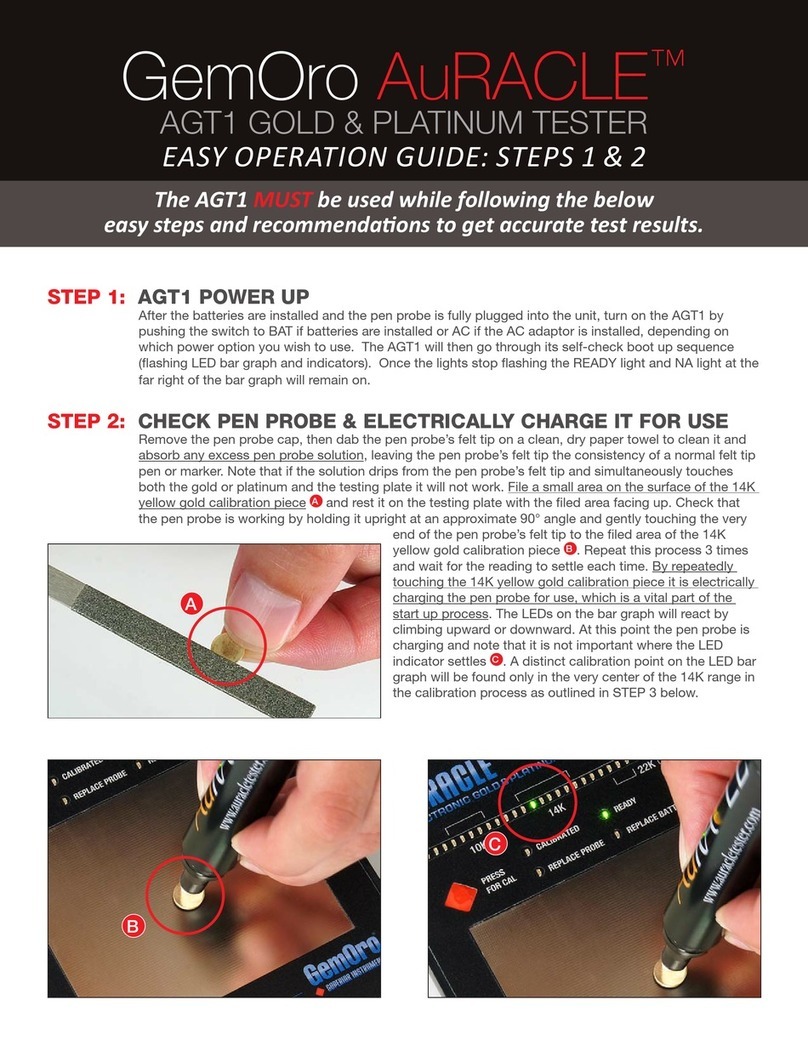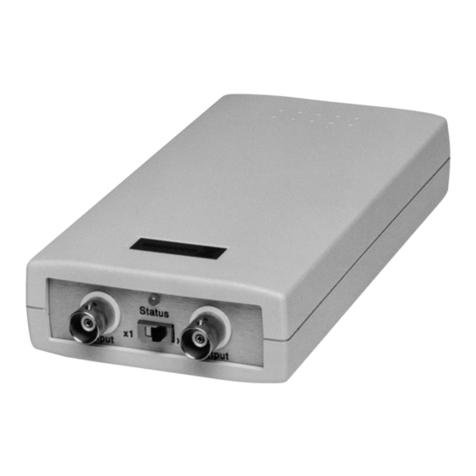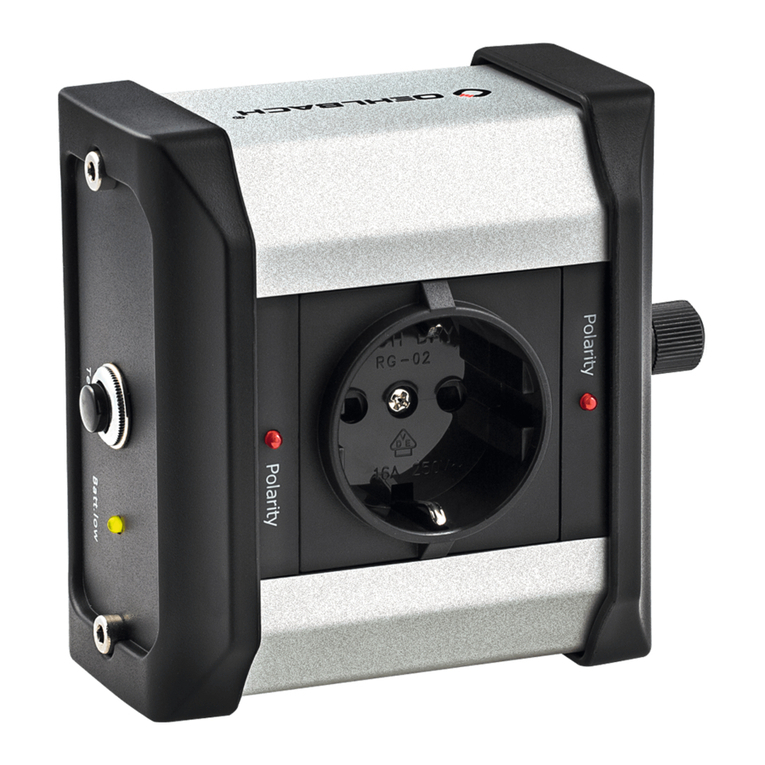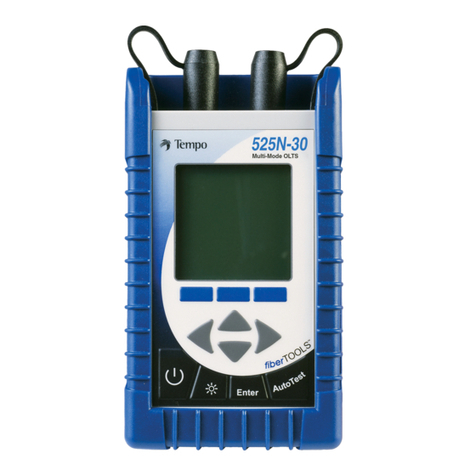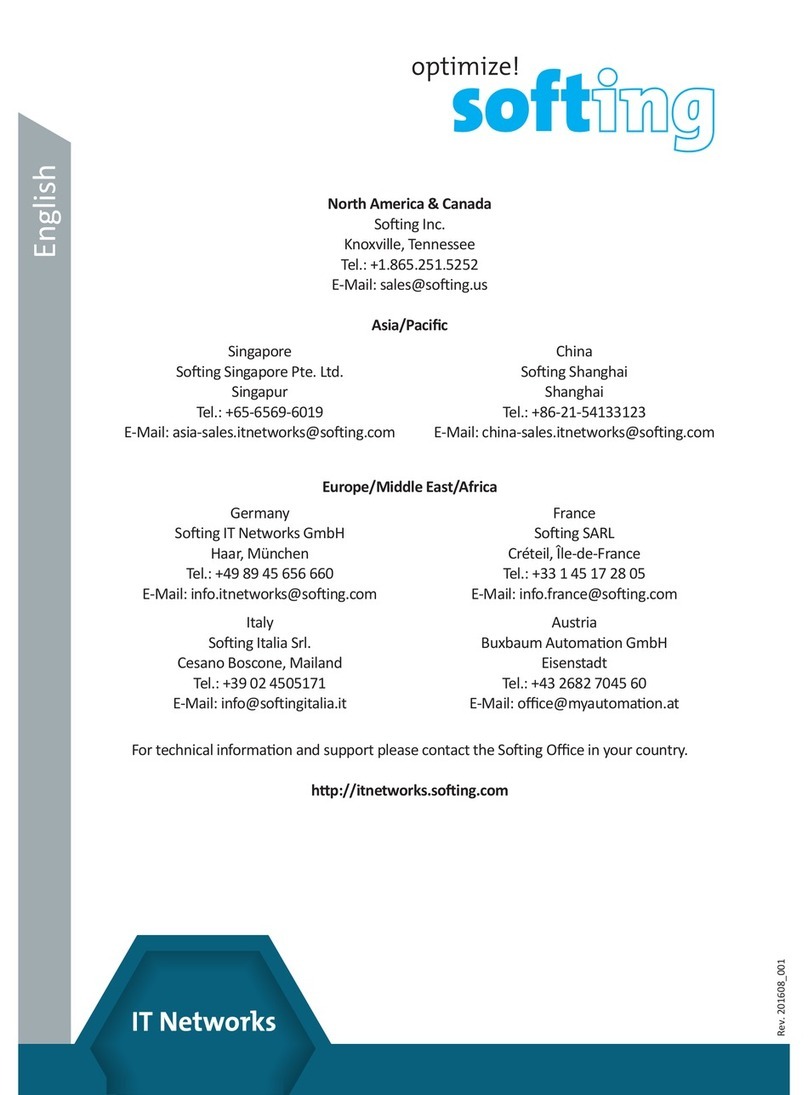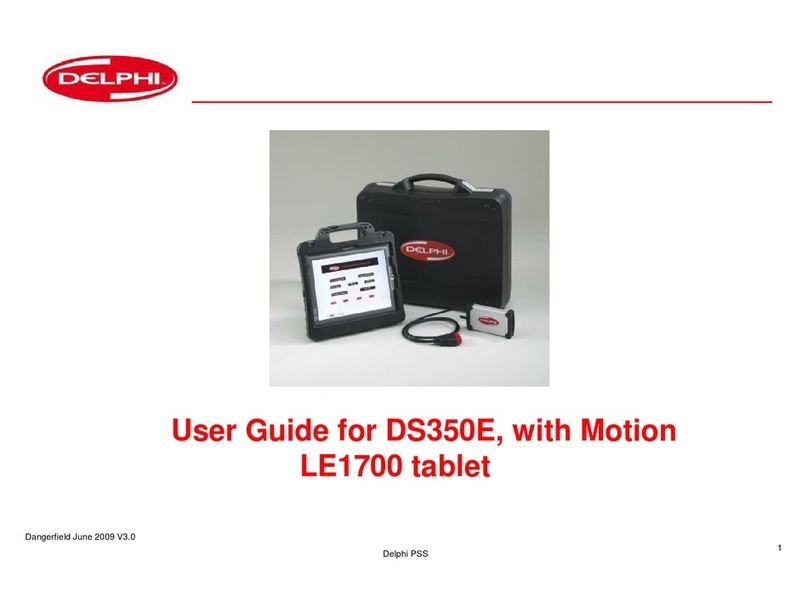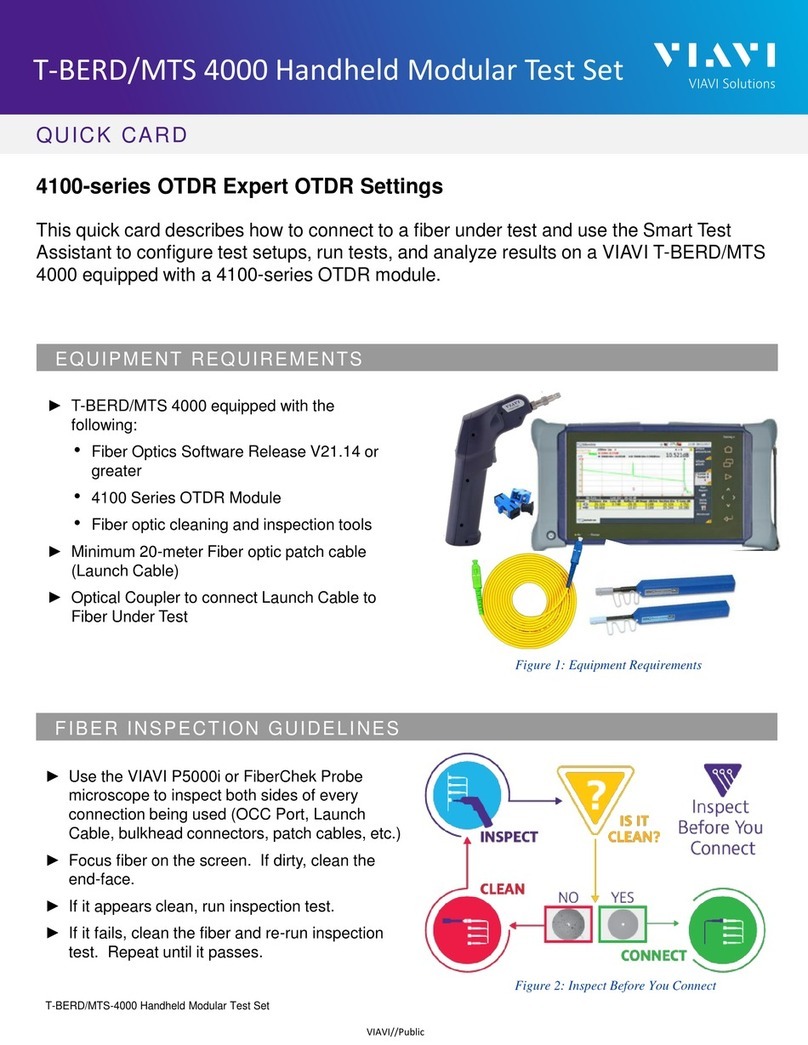Danfoss iSave 50 User manual

isave.danfoss.com
Manual del usuario
Manual de instalación,
funcionamiento y mantenimiento
iSave 40
Frontpage
Operating guide
Energy Recovery Device
iSave 50-70
Installation, Operation and
Maintenance Manual
hpp.danfoss.com
1. Validez• 4
Información y copyright del documento• 4
2. Introducción• 5
2.1 Aspectos generales• 5
2.2 Audiencia prevista• 5
2.3 Símbolos• 5
2.4 Fabricante y servicio de atención al cliente• 5
2.5 Otros documentos técnicos• 5
3. Instrucciones de seguridad• 6
3.1 Aspectos generales• 6
3.2 Uso previsto• 6
3.3 Rango de aplicación• 6
Para rango de aplicación ver hoja de datos• 6
521B1378 disponible en el apéndice 10.1. • 6
3.4 Diseño de sistema preferido• 6
Danfoss recomienda construir sistemas con• 6
un alto grado de seguridad. Nuestro preferido• 6
El diseño del sistema se puede encontrar en los datos.hoja en el apéndice 10.1. • 6
4. Inspección en el momento de la recepción, manipulación y almacenamiento• 7
4.1 Inspección en el momento de la recepción• 7
4.2 Devolución al proveedor• 7
4.3 Transporte y manipulación• 7
Use las argollas de izado para izar un ERD sin motor eléctrico.• 7
Las unidades iSave equipadas con motor eléctrico (horizontal)no deben izarse mediante argollas de izado. Las unidades iSave con motor
(horizontal) deben manipularse sujetando la unidad con dos eslingas. Una eslinga debe sujetar el motor eléctrico; la otra debe sujetar la
unidad iSave. • 8
Asegúrese de que la unidad/carga esté equilibrada antes de izarla. El centro de gravedad podría desplazarse.• 8
Algunos motores y bombas poseen argollas de izado específicas.• 8
¡No use conexiones/toberas para las operaciones de izado!• 8
Use siempre dos eslingas.• 8
4.4 Montaje iSave en motor eléctrico • 8
Izado de una unidad iSave con motor eléctrico (vertical):• 8
Ate dos correas de izado alrededor de la campana antes de izar la unidad.• 8
4.5 Almacenamiento• 9
4.6 Almacenamiento en exteriores• 9
5. Datos técnicos y revisión del diseño• 10
5.1 Detalles del diseño• 10
5.2 Nivel sonoro de la unidad iSave• 10
5.3 Materiales• 10
5.4 Temperatura y corrosión• 11
5.5 Dimensiones y pesos• 11
5.6 Datos del motor eléctrico• 11
5.7 Cómo funciona iSave?• 11
El elemento 5.1 muestra una vista en sección del iSave• 11
El iSave consta de un intercambiador de presión isobárgico giratorio y un bomba de desplazamiento, también llamada bomba
de refuerzo. La velocidad de rotación del intercambiador de presión y la bomba es exactamente la misma, ya que son acciona-
das por el mismo motor eléctrico. • 11
5.8 Calidad del agua de mar• 12
5.81 Prefiltración• 12
5.8.2Burbujas de aire• 12
5.8.3Sustancias químicas• 12
5.8.4 Arranque inicial y lavado• 12
5.9 Equipos de seguridad• 12
5.10 Lavado• 13
5.11 Procedimiento CIP o limpieza de las membranas• 13
5.12 La alta presión se mantiene después de la parada• 13
5.13 Sobrepresurización provocada por aislamiento de baja presión• 13
5.14d Sobrepresurización provocada por la bomba de alta presión• 13
5.15 Descripción del diagrama de tuberías e instrumentación•14
6. Instalación in situ• 15
6.1 Aspectos generales• 15
6.2 Instalación y alineación• 15
6.3 Orientación• 16
6.4 Tuberías y uniones• 16
6.5 Montaje de los acoplamientos• 16
6.6 Accesibilidad• 17
6.7 Accionamientos• 17
6.7.1 Motor eléctrico• 17
6.7.2 Control de velocidad• 17
6.7.3 Par de arranque de la unidad iSave/rampa del motor eléctrico• 17
6.7.4 Protección de la unidad iSave contra sobrecargas de par• 17
7. Puesta en servicio, arranque y parada• 18
7.1 Normativas de seguridad• 18
7.2 Asistencia técnica• 18
7.3 Puesta en servicio• 18
8. Servicio/mantenimiento• 19
8.1 Normativas de seguridad• 19
8.2 Asistencia técnica• 19
8.3 Programa de mantenimiento• 19
8.4 Intervalos de mantenimiento recomendados para las piezas internas• 20
Consulte la tabla siguiente.• 20
8.5 Lubricación de los cojinetes del motor eléctrico•20
9. Solución de problemas• 21
9.1 Normativas de seguridad• 21

Operating guide | iSave 50 - 70
2
180R9357 | AQ265943679828en-001002IOM iSave 50 - 70 | 03.2023
Table of Contents 1. Validity . . . . . . . . . . . . . . . . . . . . . . . . . . . . . . . . . . . . . . . . . . . . . . . . . . . . . . . . . . . . . . . . . . . . . . . . . . . . . . . . .4
2. Introduction . . . . . . . . . . . . . . . . . . . . . . . . . . . . . . . . . . . . . . . . . . . . . . . . . . . . . . . . . . . . . . . . . . . . . . . . . . . .5
2.1 General . . . . . . . . . . . . . . . . . . . . . . . . . . . . . . . . . . . . . . . . . . . . . . . . . . . . . . . . . . . . . . . . . . . . . . . . . . . . . . . . .5
2.2 Target group. . . . . . . . . . . . . . . . . . . . . . . . . . . . . . . . . . . . . . . . . . . . . . . . . . . . . . . . . . . . . . . . . . . . . . . . . . . .5
2.3 Symbols . . . . . . . . . . . . . . . . . . . . . . . . . . . . . . . . . . . . . . . . . . . . . . . . . . . . . . . . . . . . . . . . . . . . . . . . . . . . . . . .5
2.4 Manufacturer and customer service address . . . . . . . . . . . . . . . . . . . . . . . . . . . . . . . . . . . . . . . . . . . . .5
2.5 Country specific information . . . . . . . . . . . . . . . . . . . . . . . . . . . . . . . . . . . . . . . . . . . . . . . . . . . . . . . . . . . .5
2.5.1 United Kingdom . . . . . . . . . . . . . . . . . . . . . . . . . . . . . . . . . . . . . . . . . . . . . . . . . . . . . . . . . . . . . . . . . . . . . . . .5
2.6 Additional technical documents. . . . . . . . . . . . . . . . . . . . . . . . . . . . . . . . . . . . . . . . . . . . . . . . . . . . . . . . .5
3. Safety . . . . . . . . . . . . . . . . . . . . . . . . . . . . . . . . . . . . . . . . . . . . . . . . . . . . . . . . . . . . . . . . . . . . . . . . . . . . . . . . . .6
3.1 General ................................................................................ 6
3.2 Intended use. . . . . . . . . . . . . . . . . . . . . . . . . . . . . . . . . . . . . . . . . . . . . . . . . . . . . . . . . . . . . . . . . . . . . . . . . . . .6
3.3 Application range. . . . . . . . . . . . . . . . . . . . . . . . . . . . . . . . . . . . . . . . . . . . . . . . . . . . . . . . . . . . . . . . . . . . . . .6
3.4 Preferred system design. . . . . . . . . . . . . . . . . . . . . . . . . . . . . . . . . . . . . . . . . . . . . . . . . . . . . . . . . . . . . . . . .6
4. Arrival, inspection, handling and storage . . . . . . . . . . . . . . . . . . . . . . . . . . . . . . . . . . . . . . . . . . . . . . . .7
4.1 Arrival inspection . . . . . . . . . . . . . . . . . . . . . . . . . . . . . . . . . . . . . . . . . . . . . . . . . . . . . . . . . . . . . . . . . . . . . . .7
4.2 Return to the supplier . . . . . . . . . . . . . . . . . . . . . . . . . . . . . . . . . . . . . . . . . . . . . . . . . . . . . . . . . . . . . . . . . . .7
4.3 Handling. . . . . . . . . . . . . . . . . . . . . . . . . . . . . . . . . . . . . . . . . . . . . . . . . . . . . . . . . . . . . . . . . . . . . . . . . . . . . . . .7
4.4 Assembly iSave on electric motor. . . . . . . . . . . . . . . . . . . . . . . . . . . . . . . . . . . . . . . . . . . . . . . . . . . . . . . .8
4.5 Storage . . . . . . . . . . . . . . . . . . . . . . . . . . . . . . . . . . . . . . . . . . . . . . . . . . . . . . . . . . . . . . . . . . . . . . . . . . . . . . . . .9
4.6 Outdoor storage . . . . . . . . . . . . . . . . . . . . . . . . . . . . . . . . . . . . . . . . . . . . . . . . . . . . . . . . . . . . . . . . . . . . . . . .9
5. Technical data and design review. . . . . . . . . . . . . . . . . . . . . . . . . . . . . . . . . . . . . . . . . . . . . . . . . . . . . . .10
5.1 Design details. . . . . . . . . . . . . . . . . . . . . . . . . . . . . . . . . . . . . . . . . . . . . . . . . . . . . . . . . . . . . . . . . . . . . . . . . .10
5.2 Sound level of the iSave . . . . . . . . . . . . . . . . . . . . . . . . . . . . . . . . . . . . . . . . . . . . . . . . . . . . . . . . . . . . . . . .10
5.3 Materials. . . . . . . . . . . . . . . . . . . . . . . . . . . . . . . . . . . . . . . . . . . . . . . . . . . . . . . . . . . . . . . . . . . . . . . . . . . . . . .10
5.4 Temperature and corrosion. . . . . . . . . . . . . . . . . . . . . . . . . . . . . . . . . . . . . . . . . . . . . . . . . . . . . . . . . . . . .11
5.5 Dimensions and weights . . . . . . . . . . . . . . . . . . . . . . . . . . . . . . . . . . . . . . . . . . . . . . . . . . . . . . . . . . . . . . .11
5.6 Electrical motor data . . . . . . . . . . . . . . . . . . . . . . . . . . . . . . . . . . . . . . . . . . . . . . . . . . . . . . . . . . . . . . . . . . .11
5.7 How does the iSave work?. . . . . . . . . . . . . . . . . . . . . . . . . . . . . . . . . . . . . . . . . . . . . . . . . . . . . . . . . . . . . .11
5.8 Seawater quality . . . . . . . . . . . . . . . . . . . . . . . . . . . . . . . . . . . . . . . . . . . . . . . . . . . . . . . . . . . . . . . . . . . . . . .12
5.8.1 Pre-filtration . . . . . . . . . . . . . . . . . . . . . . . . . . . . . . . . . . . . . . . . . . . . . . . . . . . . . . . . . . . . . . . . . . . . . . . . . . .12
5.8.2 Air bubbles . . . . . . . . . . . . . . . . . . . . . . . . . . . . . . . . . . . . . . . . . . . . . . . . . . . . . . . . . . . . . . . . . . . . . . . . . . . .12
5.8.3 Chemicals. . . . . . . . . . . . . . . . . . . . . . . . . . . . . . . . . . . . . . . . . . . . . . . . . . . . . . . . . . . . . . . . . . . . . . . . . . . . . .12
5.8.4 Initial start up and flushing . . . . . . . . . . . . . . . . . . . . . . . . . . . . . . . . . . . . . . . . . . . . . . . . . . . . . . . . . . . . .12
5.9 Initial start up and setting of safety . . . . . . . . . . . . . . . . . . . . . . . . . . . . . . . . . . . . . . . . . . . . . . . . . . . . .12
5.10 Flushing . . . . . . . . . . . . . . . . . . . . . . . . . . . . . . . . . . . . . . . . . . . . . . . . . . . . . . . . . . . . . . . . . . . . . . . . . . . . . . .13
5.11 CIP or membrane cleaning . . . . . . . . . . . . . . . . . . . . . . . . . . . . . . . . . . . . . . . . . . . . . . . . . . . . . . . . . . . . .13
5.12 High pressure remains after shutdown. . . . . . . . . . . . . . . . . . . . . . . . . . . . . . . . . . . . . . . . . . . . . . . . . .13
5.13 Over-pressurisation caused by low pressure isolation . . . . . . . . . . . . . . . . . . . . . . . . . . . . . . . . . . .13
5.14 Over-pressurisation caused by high-pressure pump. . . . . . . . . . . . . . . . . . . . . . . . . . . . . . . . . . . . .13
5.15 Preferred system design and P&ID . . . . . . . . . . . . . . . . . . . . . . . . . . . . . . . . . . . . . . . . . . . . . . . . . . . . . .13
6. On-site installation . . . . . . . . . . . . . . . . . . . . . . . . . . . . . . . . . . . . . . . . . . . . . . . . . . . . . . . . . . . . . . . . . . . . .14
6.1 Design details. . . . . . . . . . . . . . . . . . . . . . . . . . . . . . . . . . . . . . . . . . . . . . . . . . . . . . . . . . . . . . . . . . . . . . . . . .14
6.2 Installation and alignment . . . . . . . . . . . . . . . . . . . . . . . . . . . . . . . . . . . . . . . . . . . . . . . . . . . . . . . . . . . . .14
6.3 Orientation . . . . . . . . . . . . . . . . . . . . . . . . . . . . . . . . . . . . . . . . . . . . . . . . . . . . . . . . . . . . . . . . . . . . . . . . . . . .14
6.4 Piping and joints . . . . . . . . . . . . . . . . . . . . . . . . . . . . . . . . . . . . . . . . . . . . . . . . . . . . . . . . . . . . . . . . . . . . . . .14
6.5 Mounting of coupling . . . . . . . . . . . . . . . . . . . . . . . . . . . . . . . . . . . . . . . . . . . . . . . . . . . . . . . . . . . . . . . . . .15
6.6 Accessibility . . . . . . . . . . . . . . . . . . . . . . . . . . . . . . . . . . . . . . . . . . . . . . . . . . . . . . . . . . . . . . . . . . . . . . . . . . .15
6.7 Drives . . . . . . . . . . . . . . . . . . . . . . . . . . . . . . . . . . . . . . . . . . . . . . . . . . . . . . . . . . . . . . . . . . . . . . . . . . . . . . . . .15
6.7.1 Electric motor. . . . . . . . . . . . . . . . . . . . . . . . . . . . . . . . . . . . . . . . . . . . . . . . . . . . . . . . . . . . . . . . . . . . . . . . . .15
6.7.2 Speed control. . . . . . . . . . . . . . . . . . . . . . . . . . . . . . . . . . . . . . . . . . . . . . . . . . . . . . . . . . . . . . . . . . . . . . . . . .15
6.7.3 Starting torque on the iSave. . . . . . . . . . . . . . . . . . . . . . . . . . . . . . . . . . . . . . . . . . . . . . . . . . . . . . . . . . . .15
6.7.4 Torque overload pretection on the iSave. . . . . . . . . . . . . . . . . . . . . . . . . . . . . . . . . . . . . . . . . . . . . . . .16
7. Commissioning, start-up and shutdown ................................................16
7.1 Safety regulations......................................................................16
7.2 Support................................................................................16
7.3 Commissioning ........................................................................16

Operating guide | iSave 50 - 70
3
180R9357 | AQ265943679828en-001002IOM iSave 50 - 70 | 03.2023
8. Service/Maintenance...................................................................17
8.1 Safety regulations......................................................................17
8.2 Support................................................................................17
8.3 Maintenance schedule .................................................................17
8.4 Recommended service intervals on internal parts.......................................18
8.5 Lubrication of bearings in electric motor................................................18
9. Trouble shooting.......................................................................19
9.1 Safety regulations......................................................................19
10. Appendices ............................................................................21
10.1 Data sheet iSave 50-70 - (521B1378)) ....................................................23
10.2 Start and stop procedures (180R9213). ..................................................45
10.3 Membrane cleaning of the RO system with iSave unit (180R9214) . ......................51
10.4 APP pumps and iSave overload protection(180R9372)...................................57
10.5 Hose assembly and installation (180R9084) .............................................67
10.6 iSave part list 50-70 (521B1428) .........................................................75
10.7 Operating- and maintenance instruction, electric motor (180R9230).....................87

Operating guide | iSave 50 - 70
4
180R9357 | AQ265943679828en-001002IOM iSave 50 - 70 | 03.2023
This manual is valid for iSave 50 -70
Code No./Description Serial no.
180F7020
iSave 50 without motor XXXXXX02-XXX
180F7021
iSave 70 without motor XXXXXX02-XXX
180F7038
iSave 50 Vertical
(IEC motor)
XXXXXX02-XXX
180F7023
iSave 50 horizontal
(IEC motor)
XXXXXX02-XXX
180F7040
iSave 70 vertical
(IEC motor)
XXXXXX02-XXX
180F7025
iSave 70 horizontal
(IEC motor)
XXXXXX02-XXX
PUMP
Type iSave 50 ERD
Code no. 180FXXXX
Serial no. XXXXXX02-XXX
MADE IN DENMARK
Danfoss A/S, 6430 Nordborg, Denmark
The serial number is referring to the Serial no. on
the product label. The digits shown (02) indicate
the version number of the pump.
This document is only valid for ERD version 2
and upwards.
1. Validity Document information and copyright
Installation, Operation and Maintenance
Manual.
Danfoss can accept no responsibility for possible
errors in the manual and instructions. Danfoss
reserves the right to alter its products without
notice. This also applies to products already on
order provided that such alterations can be
made without subsequential changes being
necessary in specifications already agreed.
All rights reserved. Contents provided herein
must neither be distributed, copied, reproduced,
edited or processed for any other purpose, nor
otherwise translated or published without
Danfoss’ express written consent.

Operating guide | iSave 50 - 70
5
180R9357 | AQ265943679828en-001002IOM iSave 50 - 70 | 03.2023
2. Introduction 2.1 General
iSave is manufactured by Danfoss A/S, and is sold
and marketed by a net of authorised distributors
world wide.
This manual contains the necessary instructions
for the installation, operation and service of the
iSave.
All personnel who are responsible for the
operation and maintenance of the iSave unit
must read and fully understand these
instructions, especially the section “Safety”
before:
• Transporting of the iSave unit.
•Lifting the unit.
• Installing the iSave unit on a frame.
• Connecting the iSave unit to the fluid
system.
• Connecting the electrical motor and
instrumentation.
• Commissioning the unit.
• Servicing the iSave unit, mechanics and
electrics.
• Decommissioning the iSave unit.
Ensure that these instructions are always readily
available to all personnel concerned.
2.2 Target group
This manual is intended for use by personnel
with qualified training and experience in the
operation and maintenance of a Sea Water
Reverse Osmosis (SWRO) or Brackish Water
Reverse Osmosis (BWRO) system.
2.3 Symbols
Indicates something to be noted by
the reader.
Indicates a situation which will or
couldresult in damage to the iSave
and its function.
Indicates a situation which will or
could result in personal injury and/or
damage to the iSave.
Electrical hazard. Indicates a high-voltage
warning
Safety glasses required
Hearing protection required
Safety shoes required
Safety helmet required
2.4 Manufacturer and customer service
Danfoss A/S
High Pressure Pumps
DK-6430 Nordborg, Dinamarca
Tel.: +45 7488 2222
E-mail: highpressurepumps@danfoss.com
Homepage: hpp.danfoss.com
2.6 Additional technical documents
Document name Content
Service guide: 180R9387
Disassembling and assembling Description of how to disassemble and assem-
ble the iSave
Design guide: 180R9367
Pipe connection Design guide on how to make har piping
with Victaulic clamps
Guide line: 180R9371
Pressure safety valve in SWRO systems Guide line on how to evaluate if a safty
valve is needed in a SWRO system
Guide line: 180R9370
Review sheet P&ID
Detailed description about the need for
each individual component in the preferred
P&ID
Below documents are not present in this Operating guide. Please contact Danfoss.
2.5 Country specific information
2.5.1 United Kingdom
Danfoss Ltd.
22 Wycombe End
HP9 1NB Beaconsfield
United Kingdom
If the recommendations in the manual are
not followed, Danfoss reserves the right to
void the warranty.

Operating guide | iSave 50 - 70
6
180R9357 | AQ265943679828en-001002IOM iSave 50 - 70 | 03.2023
3. Safety 3.1 General
The iSave must not be used for other
purposes than those recommended and
specified without first consulting your local
iSave distributor.
This manual must be read and completely
understood by the responsible specialist
personnel prior to installation and
commissioning.
Use of this manual does not relieve operation
and maintenance personnel of the responsibility
of applying normal good judgment in the
operation and care of this product and its
components.
This manual must be available to all personnel
concerned at the site at all time.
An iSave must always be installed and used
in accordance with existing national and local
sanitary and safety regulations and laws. It is the
responsibility of the safety officer or the chief
operator to assure compliance with all local
regulations that are not taken into account in this
manual.
The iSave is a rotating machine that typically
operates at high pressure.
3.2 Intended use
The iSave is designed for use as energy recovery
device in Sea Water Reverse Osmosis (SWRO) or
Brackish Water Reverse Osmosis (BWRO) system.
The iSave must not be used for other purposes
than recommended and quoted for without
consulting your local iSave distributor.
3.3 Application range
For application range see data sheet 521B1378
available in appendix 10.1.
Always wear suitable safety and lifting
equipment when handling the iSave.
• Bolt the iSave properly to the base before
start-up to avoid personal injury and/or
damage to the iSave.
• The pipe connections to the iSave must be
stress-free mounted, securely fastened to
the iSave and well supported. Improper
installation will or could result in personal
injury and/or damage to the iSave.
• Proper installation and care of shutdown
devices and over-pressure protection
equipment is essential.
• All electrical installation work must be
carried out by authorised personnel in
accordance with EN60204-1 and/or local
regulations.
• Install a lockable circuit breaker to avoid
inadvertent starting. Protect the motor and
other electrical equipment from overloads
with suitable
• equipment.
• The electric motors must be supplied with
adequate cooling ventilation.
• Improper installation can cause fatal
injuries.
• The iSave must not operate outside the
application range.
• During the initial start-up, slowly raise the
pressure of the system and adjust the
over-pressure protection equipment for
proper limit settings.
• Make sure that the pressure is released
from the iSave before the iSave is
disconnected from any pipe or hose
connections.
• Make sure that the iSave can be drained
without injuring anyone and without
contaminating nearby equipment or the
environment.
• Before intervening in the iSave/system,
the power must be shut off and the
starting device must be locked. When
intervening in the iSave unit, follow the
instructions for Service/Maintenance,
chapter 8.
• A failure not to follow the instructions can
result in personal injury and/or damage to
the iSave. It will also invalidate the
warranty.
• The iSave must never run dry. Dry running
produces heat and will cause damage to
internal parts.
• If the iSave does not function satisfacto-
rily, contact your local iSave distributor.
Use of this manual does not relieve
operation and maintenance personnel of
the responsibility of applying normal
good judgment in the operation and care
of this product.
Applications not suitable for the iSave
can cause damages to the iSave unit,
with risk of personal injury.

Operating guide | iSave 50 - 70
7
180R9357 | AQ265943679828en-001002IOM iSave 50 - 70 | 03.2023
• It is always the system builders’
responsibility that the system design does
not cause any form of hazard and are
adapted to local regulations.
• Proper installation and care of shutdown
devices and over-pressure protection
equipment is essential.
3.4 Preferred system design
Danfoss recommends building systems with
a high degree of safety. Our preferred system
design can be found in the data heet in appendix
10.1.
4. Arrival inspection,
handling and storage
4.1 Arrival inspection
The iSave is packed in a wood container.
The iSave ports connector are protected by
plastic caps that protect the iSave against dust
and particles. Do not remove the caps before the
system have been flushed and the iSave can be
installed.
Remove all packing materials immediately after
delivery. Immediately check the shipment for
damage on arrival and make sure that the name
plate/type designation is in accordance with the
packing slip and your order.
In case of damage and/or missing parts, a report
should be drawn up and presented o the carrier
at once.
The identification label on the iSave states the
specific type, the serial number and the code
number of the iSave; see fig. below.
The last three digits of the Serial No. indicate the
week and year of production.
PUMP
Type iSave 50 ERD
Code no. 180FXXXX
Serial no. XXXXXX02-XXX
MADE IN DENMARK
Danfoss A/S, 6430 Nordborg, Denmark
4.2 Return to the supplier
Flush the iSave with clean water. Drain the iSave
and plug the port connections with a cap/cover.
Pack the iSave into a suitable container and make
sure that it is suitably fastened to the container.
Please coordinate the shipment with your local
authorized distributor or contact anfoss direct to
obtain a return shipping address.
4.3 Transport and Handling
•
• Personnel involved in lifting and
transportation of the equipment must be
trained in proper handling and safety
procedures.
•Observe the local regulations regarding
lifting.
• Use suitable, permitted lifting equipment.
• The iSave (set) could slip the lifting
arrangement.
• Be aware of individuals located in the
operation area while lifting the
component.
The weight of the iSave including electric
motor can be found in the datasheet.
All parts weighing more than 20 kg (44 lb)
must be lifted using lifting slings and suitable
lifting devices, e.g. an overhead crane
or fork lift.
Do not use connections/nozzles for
lifting. Do not use only one sling! Make
sure that the load is balanced before
attempting the lift.
When lifting the ERD without motor use
the lifting eyes.
When you have finished using the lifting eyes,
remove them to prevent corrosion.

Operating guide | iSave 50 - 70
8
180R9357 | AQ265943679828en-001002IOM iSave 50 - 70 | 03.2023
When the iSave is mounted with an electric
motor (horizontal), it must not be lifted in the
lifting eye. An iSave assembled with motor
(horizontal) must be handled by using two slings
around the unit. One sling must be attached to
the electric motor and one sling
around the iSave. Make sure that the unit/load is
balanced before lifting. The centre of the mass
may vary.
Some motors and pumps have specific lifting
eyes.
Do not use connections/nozzles for lifting!
Always use two slings.
Lift the iSave unit with only one fastening point.
Incorrect lifting can result in personal injury and/
or damage of the unit.
Lifting the iSave with electric motor (vertical):
The two lifting belts around the bell housing
before lifting the unit.
4.4 Assembly iSave to electric motor
A: Elastic coupling
B: Bell housing
C: iSave shaft
D. iSave flange
1. Mount the coupling flush or maximum 1
mm offset from the iSave shaft end. Ensure
an air gap between coupling parts of 3-5
mm (0.12-0.2 inch).
2. Mount the bell housing on iSave. Secure
nuts with the right torque.
3. Measure the longest distance “A” from top
of bell housing to the button of coupling
claw.
4. Mount the coupling on motor shaft. Ensure
the coupling and motor flange are not in
contact with each other.
5. Measure from motor flange to the top of the
coupling. That measurement “B” shall be 3-5
mm (0.12-0.2 inch) shorter than the measure
ment “A”.
(“A” and “B” can be found on the next page).

Operating guide | iSave 50 - 70
9
180R9357 | AQ265943679828en-001002IOM iSave 50 - 70 | 03.2023
3-5 mm
6. Adjust respectively, verify the measure
ment, and secure both couplings with the
right torques on the locking screws (see
coupling operation & mounting instruc
tion).
7. Mount the elastic gear ring and mount
the bell housing/iSave on the motor.
After mounting it must be possible to
move the elastic gear ring 3-5 mm (0.12 -
0.2 inch) axial “C”. The check can be done
through the inspection hole of bell
housing. Secure flange bolts with the
right torque.
If alternative mounting is desired, please contact
Danfoss High Pressure Pumps.
Choose proper tolerances to ensure an easy
mounting of the elastic coupling without use of
tools.
Please take care to observe the recommended
length tolerances of the chosen coupling, as an
axial force on the pump will damage the pump.
(“C” can be found on the drawing below).
2 3 1
Thread size M5 M6 M8 M10
Torque (Nm) 2 4.8 10 17
Details on how to install iSave 50/70 on Danfoss
vertical and horizontal frame can be found in the
Service guide 180R9387.
4.5 Storage
When each iSave is tested before shipment in
demineralized water. When tested the iSave is
emptied and “plugged”, this will prevent frost
damages.
The storage temperature is is:
-40 °C to +70 °C (-40°F to 158 °F) –
provided that the iSave is drained of fluid and
stored “plugged”.
Frost protection is required if the iSave is not
completely drained of fluids at temperatures
below 1 °C .
Storage of iSave that have been in operation:
For shorter periods of storage flush the iSave
with permeate and store.
For long term storage (more than 2 months)
Danfoss recommends servicing the product
and clean any biological growth of the
surfaces. Store the pump dry witout water
inside.
The iSave is NOT delivered frost-protected
from the factory.
Only remove caps from the openings of the
iSave at the time of installation.
For outdoor storage cover the iSave (set) with
waterproof material.
4.6 Outdoor Storage
Danfoss recommends using DOWFROST from
DOW Chemical Company or Chillsafe mono
propylene glycol from Arco Chemical Company.
For further information on anti-freeze media,
please contact Danfoss High Pressure Pumps.
1: Bolts: torque 100 Nm
2: Screw: torque 40 Nm
3: Torque see table below

Operating guide | iSave 50 - 70
10
180R9357 | AQ265943679828en-001002IOM iSave 50 - 70 | 03.2023
5. Technical data and
design review
5.1 Design details
5.2 Sound level of the iSave
The A-weighted sound pressure level @ 1m,
LPA, 1M is for the iSave including the iSave motor.
Measurement are according to EN ISO
3744:2010. The test is made under following
conditions:
1. iSave and electrical motor mounted on
Danfoss base plate.
2. Baseplate is isolated from concrete ground
by rubber vibration dampers.
3. Flexible hoses are used on high pressure
and low pressure sides of the iSave.
4. Rotation speed is max. rpm
5. System pressure max. allowable working
pressure and a booster pressure of 3 barg.
Influences
Since the iSave is mounted on a base plate and
connected to the electromotor by a bell housing,
the noise level can only be determined for the
complete unit (system).
It is therefore important that the iSave unit is
mounted correctly on a frame with dampers
to minimise vibrations and noise.
It is also strongly recommended to use high-
pressure flexible hoses between the hard piping
in the RO plant and the iSave.
See “Hose assembly and installation” -
180R9084 in chapter10.5 and Guide line Pipe
connections 180R9367.
Alternative use multiple flexible Victaulic®
couplings on the hard piping.
Alternativamente, emplee acoplamientos Victaulic®
flexibles en la tubería rígida.
The noise level is influenced by:
• The speed of the iSave. High speed creates
more noise than low speed.
• Rigid mounting of the iSave baseplate
generates more noise than flexible
mounting
• Pipe mounting directly to the iSave
increases the noise level compared to
flexible hoses.
• Higher pressure provides higher sound
level.
5.3 Materials
All critical parts of the iSave are made of
super-duplex 1.4410/UN S32750/1.4462/
UN S32205/S31803 or the like.
Non-critical parts that are not in contact with sea
water are made of AISI 316.
The shaft to the electrical motor is sealed by
a standardised mechanical seal.
1: 3” Victaulic connections
2: Shaft
3: Low pressure shaft seal
4: Port flange
6: Valve plate
7: Cylinder drum
9: Port plate (brine)
10: Port pllate (sea water)
11: Vanes
12: Coupling
13: Intermediate flange
14: Rotor
15: Rotor element
16: Sealing plate
17: Stator
18: Motor end flange

Operating guide | iSave 50 - 70
11
180R9357 | AQ265943679828en-001002IOM iSave 50 - 70 | 03.2023
5.5 Dimensions and weights
For dimensions and weights please refer to the
iSave datasheet. See appendix 10.1
5.6 Electrical motor data
See datasheet in appendix 10.1 and “Operating
and Maintenance instructions, electric motor” in
appendix 10.7
5.7 How does the iSave work?
Figure 5.1 shows a section view of the iSave.
The iSave consists of a rotating isobargic
pressure exchanger and a positive
displacement pump, also called booster
pump. The rotation speed of the pressure
exchanger and the pump is exactly the
same, as they are driven by the same electric
motor.
5.4 Temperature and corrosion
The chart below illustrates the corrosive
resistance of different types of stainless steel
related to NaCl concentration and temperature.
Depending on the NaCl concentration, the fluid
temperature must be between:
+2 °C y 50 °C (35,6 °F y 122°F).
In order to minimise the risk of crevice
corrosion, always flush the iSave
according to the specified start/stop
procedure.
316L
Super Duplex
80ºC
70
60
50
40
30
20 100
160 1600
1000
16000
10 000
160000
100 000 CI -
ppm
NaCI
ppm
Duplex

Operating guide | iSave 50 - 70
12
180R9357 | AQ265943679828en-001002IOM iSave 50 - 70 | 03.2023
5.8.3Chemicals
The iSave can be flushed with biocide like the
membranes. The biocide must be compatible
with the materials used in the iSave.
iSave material can be found in the parts list,
appendix 10.6.
5.8.4 Initial start up and flushing
Prior to the initial start-up, all piping associated
with the iSave unit should be thoroughly flushed
to assure that no impurities enter the iSave.
Inadequate pre-flushing will strongly affect the
life of the iSave and may lead to its eventual
breakdown.
It is essential that the water used for the final
pre-flush is pre-filtered to a level described in
chapter 5.8
It is recommended to disconnect all connections
to the iSave and to thoroughly flush the piping
before the iSave is connected to the inlet and
outlet connections.It is recommended to install
temporary basket strainers at both inlets to
the iSave during the initial start-up and
commissioning.
Strainers do not eliminate the need for
thoroughly pipe flushing before commissioning.
Also see “Instruction for start and stop of
the SWRO with iSave unit” - 180R9213 in
appendix 10.2.
5.9 Initial start up and settings of safety
equipment
The system designer is responsible to design the
equipment according to the local regulations where
the equipment is running. According to PED
2014/68/ EU a risk assessment must be made to
identify and evaluate hazards which apply to his
equipment on account of pressure.
Where under reasonable foreseeable conditions, the
allowable limits could be exceeded, the pressure
equipment must be fitted with, or provision made
for fitting of a suitable protective device.
Dischage pressure on the pump is generated only
by the restriction in the pipelines, valves and
membranes.
The pump can build up pressure that will exceed
the mechanical strength of the membrane
vessels, pipes and other accessories.
The pressure rise can be fast and may exceed the
response time for electrical safety equipment,
like pressure switch and control loop.
For more information on the importance of
proper filtration, please consult our
publication “Filtration”,
AI317041322125en-000201 which also will
provide you with an explanation of filtration
definitions and guidance on how to select the
right filter.
5.8.2Air bubbles
Large bubbles in a pressurised RO system can
result in damage to piping and equipment. All air
must be bleed from both the LP and HP before
the RO system is pressurised. Special
consideration should also be given to air bubbles
in feed flow, continuously fed into the HP pump
and iSave.
5.8 Seawater quality
5.81 Pre-filtration
It is important that the incoming water is filtered
properly to assure optimum service life of the
iSave. A true graded density melt-blown depth
filter cartridge rated at 3 μm is therefore
recommended. Poor pre-filtration of the feed
water will result in reduced service life of the
iSave.
Filters can be purchased from Danfoss High
Pressure Pumps.
The iSave may request a different pre-filter of the
seawater than the HP pump and other
omponents in the RO system.
It is important to use a proper filter housing that
allows a good seal between housing and filter
cartridge. If there is a high risk of water by-pass it
is recommended to use a second stage filter
solution.
As the various filters on the market differ greatly,
Danfoss High Pressure Pumps recommends using
cartridges with consistent, reliable performance
and high efficiency, in which fibres are blown
continuously onto a central support core.
Danfoss High Pressure Pumps does not
recommend cartridges requiring any type of
binders or resins.

Operating guide | iSave 50 - 70
13
180R9357 | AQ265943679828en-001002IOM iSave 50 - 70 | 03.2023
5.12 High pressure remains after shutdown
The HP line of the RO system equipped with an iSave
can remain pressurised for a long time after
shutdown. Pressure decreases as water slowly leaks
through the iSave. If more rapid system
depressurisation is required, the system should be
bled through a suitable valve on the HP concentrate
line.
trado HP.
5.13 Over-pressurisation caused by low
pressure isolation
If the low-pressure side of the iSave is blocked
and the iSave is exposed to high-pressure, there
is a risk that the iSave or the LP piping could be
damaged by over-pressurisation.
5.14 Over-pressurisation caused by the
high-pressure pump.
Discharge pressure on the pump is generated
only by the restriction in the pipelines, valves
and membranes. The pump can build up
pressure that will exceed the mechanical
strength of the membrane vessels, pipes
and other accessories. The pressure rise can be
fast and may exceed the response time for
electrical safety equipment, like pressure
switch and control loop.
5.11 CIP or membrane cleaning
The purpose of membrane cleaning is to reduce
scaling and fouling in the membranes. For optimal
performance specific chemicals are required,
depending on the cause of the pollution. After
chemical treatment the system must be
flushed with permeate.
Also see instruction “Membrane cleaning of
RO system with iSave unit” in appendix 10.3.
The flush water coming out of the membranes may
consist of a large amount of suspended inorganic
particles. It is important to assure that hese particles
must not enter the iSave as the waste product of
flushing exceed the iSave filtration.
Always check the pressure in the high-pressure
lines before making service in the HP lines or
pressurised equipment.
To prevent such over-pressurisation, appropriate
relief valves should be used and procedures should
be implemented to assure that the HP of
the iSave is protected against excess pressure.
Special attention should be given to the
pressure in the HP line (7) as the iSave may
start to cavitate when it runs at high speed
and the pressure in the P line (7) drops below 2
bargs. This can be avoided by reducing the
speed of the iSave and keeping the pressurein
the HP line at the minimum of 2 barg.
At this low pressure the iSave may only
run for a maximum of 10 minutes.
Failing to flush the iSave with fresh water before
extended shutdowns may result in extensive
biological growth and cause corrosion in the
iSave and other equipment in the RO system.
To prevent such over-pressurisation, appropriate
relief valves should be used and procedures should
be implemented to assure that the HP of the iSave is
depressurised prior to the isolation of the LP side..
5.10 Flushing
RO membranes require periodic flushing to
limit biological fouling.
There are two types of flushing: feed water
(Seawater) flush and fresh water (Permeate)
flush.
Regardless of the flush water used, the water
must be pre-filtered to the level described
in chapter 5.8. All parts of the iSave must be
flushed, i.e. LP- and HP flow channels.
Follow the guide line 180R9213 “Start and stop of
the SWRO with iSave in appendix 10.2.
It is required to flush with permeate:
•After chemical treatment
• For stop more than 1 day the iSave must be
rotated during permeate flush
• Before long time shut down
It is required to flush with fresh sea water prior to
every shut down.
To prevent such over-pressurisation, appropri-
ate relief valves should be used and proce-
dures should be implemented to safeguard
the HP and LP sides of the iSave and/or the
RO system.
5.15 Explanation of P&ID set-up
See data sheet in appendix 10.1.

Operating guide | iSave 50 - 70
14
180R9357 | AQ265943679828en-001002IOM iSave 50 - 70 | 03.2023
6. On-site installation 6.1 Design details
For safety instruction see chapter 3.
6.2 Installation and alignment
The figure below illustrates the major iSave
components.
An unlocked bolt can result in personal injury
and/or damage to the iSave
Misalignment of the base frame to the iSave may
cause stress and/or damage.
The iSave is connected to the electric motor
by the bell housing and a flexible coupling.
If not using Danfoss base frame both the
iSave and the motor must be supported
without applying stress/load to the bell
housing.
Danfoss provides the iSave with a base
frame and support brackets. Although the
base frame is of a sturdy design, it can flex
or bend when it is bolted to the foundation.
The base frame thus requires a solid
foundation such as concrete or rigid steel
frame. The base frame itself must be aligned
to avoid bending caused by bolting to an
uneven foundation.
A rigid foundation for the iSave assembly is
important, and must fulfil Eurocode 2:
EN1992-1-1, and the iSave assembly must
be bolted to the foundation with M12 bolts.
The bolts used must be of proper design
and must be installed in accordance with
bolt manufacturer’s recommendations.
To reduce noise it is recommended to use
resilient mounts between the baseplate and
the foundation. Make sure that the bolts are
properly locked and will stay locked over time.
6.3 Orientation
The iSave can be mounted horizontally and
vertically.
When mounted vertically, the electric motor
must be placed above the iSave.
6.4 Piping and joints
Piping material and schedule is of high
importance. The strength of the Victaulic®
connections is influenced by the material used
for both the Victaulic® clamps and the hard
piping.
The hard piping and connections used must
be of proper design and must be installed in
accordance with the manufacturer’s
recommendations.
Hard piping to the iSave must be properly
aligned to avoid stress on the iSave port
connections.
Pipe connection must be aligned as
shown in the figures next page. Don’t use the
iSave as a strain for hard piping.
!
Ccrrect piping alignment Incorrect piping alignment
Incorrect piping alignment
The hard piping and connections used must
be of proper design and must be installed in
accordance with the manufacturer’s recom-
mendations.
A failure to comply with this will or may result
in personal injury and/or damage the iSave.

Operating guide | iSave 50 - 70
15
180R9357 | AQ265943679828en-001002IOM iSave 50 - 70 | 03.2023
Misalignment of the hard pipes may place
stress on the iSave port connections and may
damage the iSave.
6.5 Mounting of coupling
The figure below illustrates how to mount the
flexible coupling between the iSave and to
connect it to the electric motor..
Min. 3 -5 mm air space
100 NM ± 10 NM
40 NM ± 4 NM
Any axial and radial load on the shaft must be
avoided.
A: Flexible coupling
B: Bell housing
C: Motor shaft
C
A
B
6.6 Accessibility
With respect to the service and replacement
of the complete iSave unit, it is recommended to
maintain sufficient space around the unit.
The space must be sufficient enough to allow for
safe lifting of the equipment, with no risk for
personal injury and/or damage to the iSave.
6.7 Drives
6.7.1 Electric motor
The iSave must only be driven by an electric
motor.
6.7.2 Speed control
The rotation speed on the electric motor can
be controlled by a VFD. The VFD must be able to
operate at constant torque over the whole range
of speed. The direction of rotation can be seen
on the identification label.
Using anything other than an electric motor
can lead to an irreparable fracture of the
iSave’s internal parts.
PUMP
Type iSave 50 ERD
Code no. 180FXXXX
Serial no. XXXXXX02-XXX
MADE IN DENMARK
Danfoss A/S, 6430 Nordborg, Denmark
When connecting to the power supply, check the
direction of rotation. The rotation can only be
checked with water connected and iSave
bleeded. This can be made by:
1. Looking at the fan in the end of the electric
motor.
2. Removing the plug in the bell housing and
watch the rotation of coupling.
3. Before assembling the iSave on the electric
motor, check the rotation of the shaft on the
electric motor.
Special attention has to be on NON
PROTECTED - FREE ROTATING shaft on
the electric motor. Ignorance will or
could result in personal injury.
Running the iSave in the wrong direction for
more than a few minutes can cause un-
intended wear on the iSave. If the electric
motor is running at a lower speed, extra care
must be taken to ensure that the electric
motor is NOT overheated. External cooling
may be necessary.
6.7.3 Starting torque for the iSave
Because of the inertia and stick-slip friction of the
iSave internal parts, the torque may exceed the
maximum allowable operation torque for the
iSave when the speed is ramped up from zero to
maximum.
It is required to use a VFD. See Danfoss guide line
180R9372 “APP pumps and iSave overload
protection”.

Operating guide | iSave 50 - 70
16
180R9357 | AQ265943679828en-001002IOM iSave 50 - 70 | 03.2023
6.7.4 Torque overload protection on the
iSave
The electric motor and iSave must always be
protected against overload.
As continuously operation the maximum
torque on the iSave must be monitored.
The electric motor must be shut off if the
maximum torque of the iSave exceeds the
defined limit.
If more electric motors are powered by the
same VFD, each electric motor must be
equipped with “torque limit equipment” to
protect the iSave against overload.
Below are examples of equipment which
can measure the load on the electric motor
or limit the torque on the iSave.
The electric motor and iSave must always be
protected against overload.
See Danfoss guide line 180R9372 “APP pumps
and iSave overload protection” in the appendix
10.4.
If torque exceeds the maximum operation
torque, it may lead to an irreparable fracture of
the iSave’s internal parts.
1. VFD with integrated current monitoring
relays.
2. External current monitoring relays suitable-
for VFD control.
7. Commissioning,
start-up and shutdown
The operator ensures that all inspection and
installation work is performed by authorised,
qualified specialized personnel who are
thoroughly familiar with the manual..
• Before starting up the iSave and the
high-pressure pump, make sure that the
following requirements are met:
• The iSave has been properly connected to
the electric power supply and is quipped
with all protection devices in accordance
with EN 60204-1
• Check that all motor protections are
properly set.
• All safety equipment, auxiliary equipment
and connection required are properly
connected and operational.
• Check all bolts in all connections and in the
foundation of the iSave and the pumps.
• All pipes are flushed, free from debris and
full of water.
• The iSave has been bled and is full of
water.
• At pressure lower that 10 barg, check the
system for leakage.
Slowly raise the pressure in the system and set
all pressure switches to the correct limit and
continually check all connections.
• If pressure relief valve is present, set
pressure relief valve on both low and
high-pressure at the maximum system
pressure.
• Check high-pressure hoses for proper
assembly and inspect for external leakage
for all connections.
•At low pressure, start the iSave and check
direction of rotation.
• “Start and stop procedure” Guide line
180R9213. - appendix 10.2.
7.2 Support
Danfoss A/S offers commissioning and service at
system manufacturer’s location.
Rated quotes are offered upon request.
7.3 Commissioning
Before starting up the iSave and the highpres-
sure pump, make sure the following
requirements are met:
7.1 Safety regulations

Operating guide | iSave 50 - 70
17
180R9357 | AQ265943679828en-001002IOM iSave 50 - 70 | 03.2023
8. Service/Maintenance 8.1 Safety regulations
The operator ensures that all maintenance,
inspection and installation work is performed
by authorised, qualified specialist personnel
who are thoroughly familiar with the manual.
Before intervening in the iSave/system:
• The power must be shut off and the main
switch must be locked.
• The pressure in the high-pressure lines
must be drained to the low-pressure side.
• The water in all connected pipes must be
drained.
Always use suitable safety and lifting equip-
ment when handling the iSave, and follow the
instructions in chapter 4.3.
•Assure correct settings of safety equip-
ment before start-up.
• When the system is re-started after
service and maintenance follow the
instruction in chapter 8 and in “Start and
stop procedures” in guide line 180R9213
in appendix 10.2.
1. Re-check bolts in the foundation and the
base plate of the iSave and tighten the
bolts to specified torque if necessary.
2. Visually inspect all pipe connections/
couplings for external leakage.
3. Re-check bolts in all pipe connections/
couplings and tighten the bolts to
specified torque if necessary.
1. Replace filters if necessary.
2. Clean the filter housing and reinstall
filters. Make sure no debris enters the
system.
One day after commissioning:
1. Re-check bolts in the foundation and the
base plate of the iSave and tighten the
bolts to specified torque if necessary.
2. Re-check alignment of the iSave base
plate and iSave.
3. Visually inspect all pipe connections/
couplings for external leakage.
4. Re-check bolts in all pipe connections/
couplings and tighten the bolts to
specified torque if necessary.
1. Replace filters if necessary.
2. Clean the filter housing and install the new
filter. Make sure no debris enters the
system.
3. Audibly inspect the iSave assembly. If there
is irregular sounds or vibration inspect the
internal parts of the iSave and replace if
necessary.
Three months after commissioning:
8.2 Support
Danfoss A/S offers commissioning and service
at the system manufacturer’s location.
Tates/quotes are offered upon request.
8.3 Maintenance schedule
The schedule of preventive maintenance below
will help ensure that the iSave provides years of
trouble-free performance.
1. Re-check bolts in the foundation and the
baseplate of the iSave and tighten the
bolts to specified torque if necessary.
2. Re-check alignment of iSave base plate
and iSave.
3. Visually inspect all pipe connections/
couplings for external leakage.
4. Re-check bolts in all pipe connections/
couplings and tighten the bolts to
specified torque if necessary.
1. Replace filters if necessary.
2. Clean the filter housing and nstall the new
filter. Make sure no debris enters the
system.
3. Visually inspect iSave coupling and
replace if necessary.
4. Audibly inspect the iSave assembly. If
there is irregular sounds or vibrations
inspect the internals parts of the iSave
and replace if necessary.
5. Check power consumption. If there are
irregular parts of the iSave and replace if
necessary.
6. Lubricate motor bearings.
Half year:
Annually:
1.
For vertical mounted electric motor
lubricate motor bearings.

Operating guide | iSave 50 - 70
18
180R9357 | AQ265943679828en-001002IOM iSave 50 - 70 | 03.2023
8.4 Recommended service intervals on
internal parts
Se below table.
For detailed information on parts see Service
guide 180R9392 Parts list.
8.5 Lubrication of bearings in electric
motor
Motors with a re-greasing system must be
lubricated with high quality lithium complex
grease, NLGI grade 2 or 3 with a temperature
range between -40 °C to 150 °C.
For electric motors in vertical mount; grease
every 6 months.
For electric motor in horizontal mount;
grease every 12 months.
If the motor has increased vibrations or
sound check the bearings.
Follow manufacturer’s recommendations for
electric motor service and maintenance, see
appendix 10.7.
Description Service interval Service interval (2nd, 3rd)
Tool kit
Screw and seal kit 32.000 hours 26.000 hours
Shaft seal kit 32.000 hours 26.000 hours
Coupling kit 56.000 hours 56.000 hours
Port plate kit (PE), iSave 50 32.000 hours 26.000 hours
Port plate kit (PE), iSave 70 32.000 hours 26.000 hours
Vane kit (8 pcs)
Valve kit, Pressure exchanger 32.000 hours 26.000 hours
Rotor element and sealing plates kt 32.000 hours 26.000 hours

Operating guide | iSave 50 - 70
19
180R9357 | AQ265943679828en-001002IOM iSave 50 - 70 | 03.2023
9. Trouble-shooting 9.1 Safety regulations
The operator ensures that all inspection and
installation work is performed by authorised,
qualified specialist personnel who are
thoroughly familiar with the manual.
The numbers in () correspond to the preferred system design and P&ID (see data sheet)
Problem Possible cause Action
VFD cannot start the iSave at initial start-up VFD is not designed for constant torque Choose a VFD that is designed for constant
torque
VFD cannot deliver sufficient start torque Choose a VFD that is designed for sufficient
start torque. See guide line 180R9372
Ramp-up settings in the VFD are not cor-
rect. VFD is tilting Set ramp-up parameters correct. See guide
line 180R9372
Valve (9) is closed Open valve (9)
Pressure in the HP line (5) is too high Start the iSave only when the pressure in
the HP line is low
Torque on iSave is too high during opera-
tion Pressure difference from HP-out (5) to HP-
in (10) is too high Clean or change membranes
Debris in the booster pump or iSave Clean the system
Wear in the booster pump or iSave Repair or change the parts
Design of the basic plant does not fit the
performance of the iSave Change design to fit the iSave performance
Permeate production is too low (17) Valves (6), (7), (8) or (16) are leaking Repair or change valve(s)
Internal leakage in iSave Repair iSave
HP pump flow (2) is too small Correct speed on the HP pump
Check the HP pump and repair if necessary
Pressure on the membranes (5) is too high
Fouling on the membranes Clean the membranes
Mixing in the iSave is too high Check flow on LP-in (12) and adjust flow
Flow out of the iSave is too low and causes
a recovery rate that is too high Check speed on iSave and change if neces-
sary
Booster pump in the iSave is worn out.
Perform service on the VP
Pressure on the membranes (5) is too low
Valves (6), (7), (8) or (16) are leaking Repair or change valve (s)
Internal leakage in iSave Repair iSave
Pressure on the membranes (5) is too low Incorrect speed on the HP pump
Check the HP pump and repair, if necessary
Before intervening in the iSave/system:
• The power must be shut off and the
starting device be locked.
• The pressure in the high-pressure lines
must be drained to lowpressure side.
• The water in all connected pipes must be
drained.

Operating guide | iSave 50 - 70
20
180R9357 | AQ265943679828en-001002IOM iSave 50 - 70 | 03.2023
Other manuals for iSave 50
1
This manual suits for next models
1
Table of contents
Other Danfoss Test Equipment manuals
